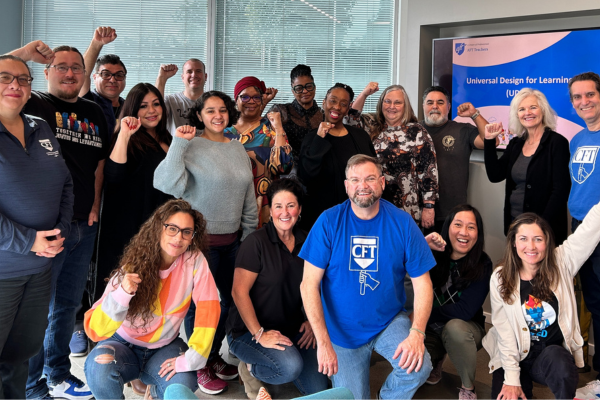WRITTEN BY: EMILY WILSON
When Steve McDougall became the president of the Early Childhood/TK-12 Council, he sent out a survey to the local leaders asking them what trouble areas they saw that needed addressing.
“Special education always percolates to the top because it’s an underfunded mandate since 1975,” he said.
“And in recent times, more and more students are being identified as needing special education than ever before. It used to be the state average would hover under 10%. Now it’s cracked 10% and it’s more than that statewide.”
In February, EC/TK-12 Council held its fourth annual Special Education Summit at the CFT offices in Emeryville, inviting local leaders as well as practicioners, psychologists, counselors, and nurses.
McDougall thinks people left with some hope. Participants took anonymous surveys and the feedback was positive, with responses about how knowledgeable and dynamic the trainers were and how warm and friendly the community; praise for the conversations, facilities, and the food; and someone who said they were inspired to do a better job and the presentations and interactions at the summit had given them a better idea of how to help their students as well as new teachers.
Juventino Gutierrez, a high school ethnic studies teacher and the director of special education for El Rancho Federation of Teachers, attended the summit because he wanted to learn about identifying different modes of learning as well as to meet other special education teachers.
“The most useful of these things is always connecting to other and hearing common struggles we’re having and what are the needs teachers have and how school districts respond,” he said. “We ended up having interesting conversations about these contrasting things — one, that enrollment is going down — this is a common narrative pushed by school districts when they want to say, ‘Hey we can’t give you a raise.’ At the same time, the number of students being identified with special education needs, whether it’s a 504 plan, or some more mild or even more moderate needs is going up, we get more and more students who are identified as being on the autism spectrum.”
Gutierrez said the attendees, about 40 of them, all seemed to agree on one thing — that special education is one of the most grossly underfunded federal mandates.
Margela Chagoya, a United Teachers Los Angeles special education teacher who’s been at the same middle school for more than 20 years, says she sees the effects of that lack of funds has on her students. Chagoya went to the trainings on Universal Design for Learning, emphasizing using different learning modalities in all the lessons. Chagoya says she supports this method but worries special ed students who are several class levels behind may not be able to keep up in a general classroom. She has been urging the district to go incrementally when it comes to inclusion, and like Gutierrez said, not ignore federal mandates and the Individualized Education Plan (IEP) that special ed students have.
Chagoya, who chairs the CFT Special Education Committee, teaches history to 7th and 8th graders in a self-contained classroom with no more than 10 students.
“The setting is conducive to their learning,” she said. “Now, you put my 10 in a classroom with 25 others, and they’re going to regress, and they’re definitely not going to be able learn as well as they could when they have a smaller classroom setting as indicated on the IEP. My frustration is that districts are turning a blind eye to what the IEP mandates and that’s a federal document.”

